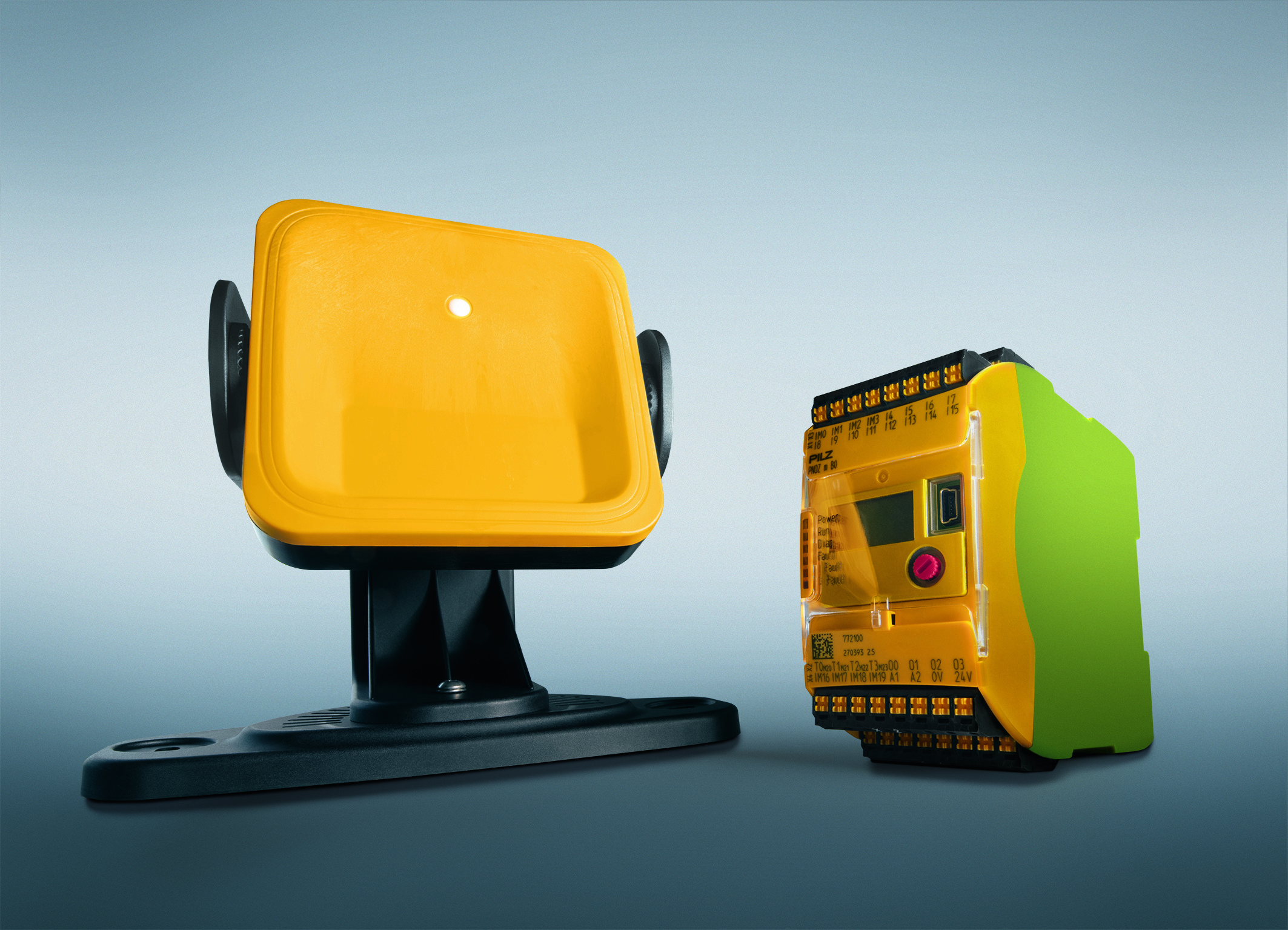Danger Clearly Visible on (Radar) Screen
Safe Radar System Ensures Efficient Workflows in Synthetic Fertiliser Production, Even under Extreme Visibility Conditions
At the Antwerp site, a network of conveyors and lifts transports products to and from the silos, weighing stations and loading bays. The connecting element in this network at the bulk cargo port is the gigantic conveyor. It is a sorting system, but at the same time is also responsible for transporting goods to the correct destination. Peter Vermaete, Asset & Production Manager at EuroChem, describes the basic logistic process: “To tip the products we use a belt tripper, which intersects the conveyor. This belt tripper runs on rails and can approach various stations. To optimise workflows from an ergonomic perspective and at the same time optimise safety during the tipping operation, we wanted to modernise the plant, focusing on handling for the operator.” For Eurochem, the focus was on automation. A solution was needed, in which safety has minimal influence on workflows.
Dusty Business, Monitored Safely
Fertiliser is produced in a rugged, i.e. dusty environment, so to ensure a smooth production process it is vital that the tipping unit is cleaned regularly. Though, that also means that the area in which the machine is located must always be easily accessible to the operator. At the same time, however, it is necessary to protect the area sufficiently. As the belt tripper weighs several tonnes and is always in motion, it inevitably presents a high safety risk to operators.
EuroChem found the ideal solution, reconciling both safety and user friendliness, with the new radar system PSENradar from Pilz. The radar system operates using radar sensors which detect any movement around the unit. The safe radar system PSENradar at EuroChem provides safety up to performance level d (PL d) and safety integrity level 2 (SIL 2), category 2. As an alternative to safe laser scanners, the great advantage of this technology is that, unlike laser beams, the effectiveness of radar waves is not compromised by external influences such as dust, dirt, rain, light, sparks or vibrations and shock. Further benefits of the safe radar system solution from Pilz include high plant productivity, despite the most rugged of environments.
“We first saw the radar system on the Pilz stand at the Hannover Messe, Jorn Verstraeten, responsible at EuroChem for the Maintenance Department's E&I section, recalls. “And were so interested that we wanted to discuss this project in more detail with Pilz. In the end we commissioned Pilz to undertake the risk analysis, develop the safety concept and also carry out the implementation. Peter Vermaete adds: “Pilz was already one of our long-standing suppliers of certain components. But we hadn't yet called on this company for consulting and engineering services.”
Easily Set Up Safety Zones
For the solution at EuroChem, six radar sensors are attached to each of the conveyor’s six tipping stations (unloading points). They monitor safety by reliably detecting all movements in the surrounding area. Each discharge point has its own control unit which interprets the sensors’ signals and is used to configure the warning and danger zones. The PSSuniversal PLC controller from the automation system PSS 4000 from Pilz is also part of the solution; it collects the status messages from all the control units, the E-STOP pushbutton and the rope pull switch. Vermaete: “Some adjustments were required, however, in order to position the radar sensors so that the whole area around a discharge point was covered, without detecting the movement of the conveyor. We succeeded in doing this and now have a high-performance solution that enables people to work close to the unit, without being exposed to hazardous situations.”
Now, a signal tower displays the respective current hazard status: if a staff member approaches a danger source, an orange lamp lights up first as a warning. Should someone still access the danger zone, the unit is switched to a safe state. This is signalled by a red lamp. However, the controller ensures that a safe and reliable reaction is triggered not only when a warning zone or protection zone is violated, but also in the event of a fault: the control unit also has a blanking function which detects whether a sensor is “blanked – by an object, which misaligns the sensor, for example. It furthermore detects if the position of the sensor itself changes or is pushed to the side, whether intentionally or by accident – during cleaning work, for example. This way, tampering of any kind can be prevented.
The use of radar sensors is a relatively new concept for safety applications. But in extreme, difficult-to-secure production environments such as those at EuroChem, these sensors represent a high-performance, lasting and safe solution. Peter Vermaete sums it up: “Pilz were a great help to us with this project. Not only when developing and validating the concept, but also with the on-site implementation.”
Author
Benoit Sioen,
Safety Solutions Engineer, Pilz Belgium
Protection Zone Monitoring Via Radar
Pilz has once again extended its safe radar solution for safe protection zone monitoring, even in rugged environments: Another sensor is now available for the safe radar system PSENradar. The new radar sensor PSEN rd1.2 can be used for Cat. 3/PL d and can safely protect robot applications, too. In conjunction with the equally new analysing unit PSEN rd1.0 I/O PS ETH, it is now even easier to incorporate the safe radar system into existing applications, so optimising commissioning. When bundled with the configurable small controller PNOZmulti 2 – or, as in the case of EuroChem, with the automation system PSS 4000 – PSENradar represents a safe, complete solution for protection zone monitoring, including conformity assessment. The system is used in places where optoelectronic sensors reach their limits, particularly in rugged application conditions, such as those found in heavy industry and in the transport and logistics sector.







